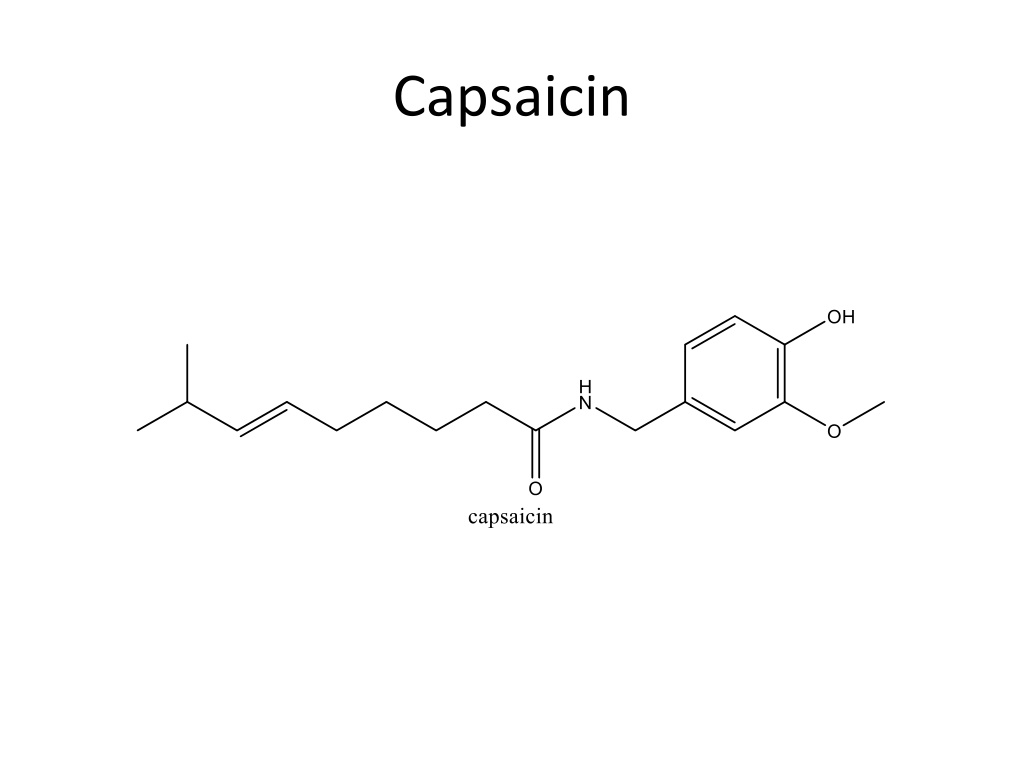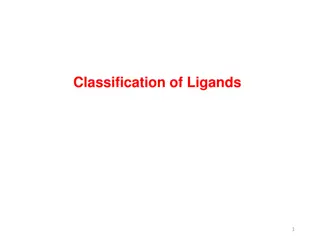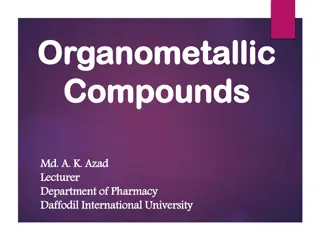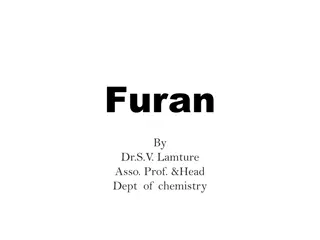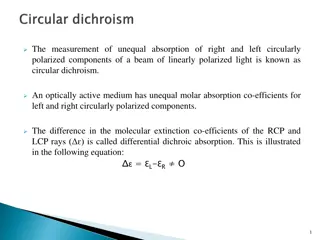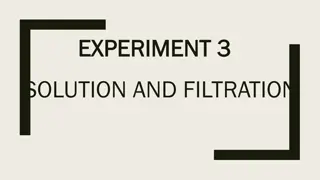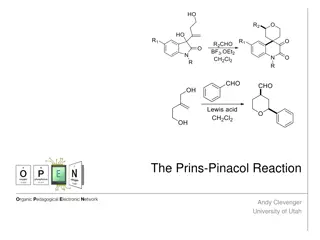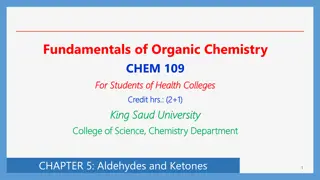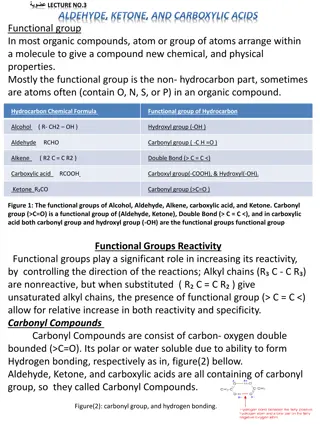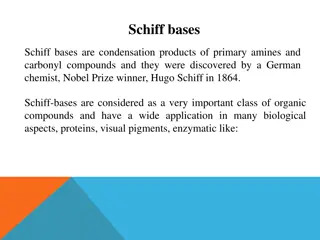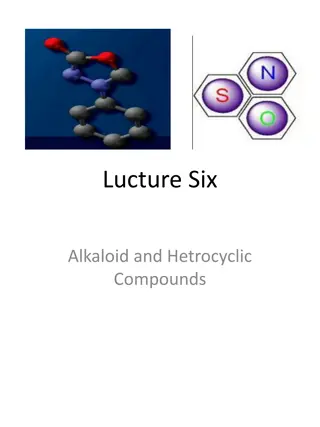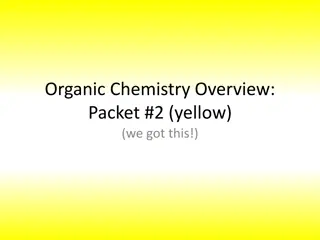Structure and Properties of Carbonyl Compounds
Carbonyl compounds, such as aldehydes and ketones, exhibit unique structures and physical properties due to the presence of the carbonyl group. They are polar compounds capable of hydrogen bonding, impacting their boiling points and reactivity. Explore their nomenclature and common names.
Download Presentation

Please find below an Image/Link to download the presentation.
The content on the website is provided AS IS for your information and personal use only. It may not be sold, licensed, or shared on other websites without obtaining consent from the author.If you encounter any issues during the download, it is possible that the publisher has removed the file from their server.
You are allowed to download the files provided on this website for personal or commercial use, subject to the condition that they are used lawfully. All files are the property of their respective owners.
The content on the website is provided AS IS for your information and personal use only. It may not be sold, licensed, or shared on other websites without obtaining consent from the author.
E N D
Presentation Transcript
Carbonyl Compounds Contain the carbonyl group C=O Short forms O Aldehydes: R may be hydrogen, usually a carbon containing group H RCHO R C O Ketones: R contains carbon R RCOR R C
Structures of Aldehydes and Ketones
13.1 Structure and Physical Properties 1 Aldehydes and ketones are polar compounds The carbonyl group is polar The oxygen end is electronegative Can hydrogen bond to water Cannot form intermolecular hydrogen bond Hydrogen bond - O O H O + C H C
Hydrogen Bonding and dipole association in Carbonyls 13.1 Structure and Physical Properties Bonding with H2O dipole-dipole
Physical Properties Carbonyls boil at Higher temperatures than: Hydrocarbons Ethers Lower temperatures than: Alcohols
13.2 Nomenclature and Common Names 1 Naming Aldehydes Locate the parent compound Longest continuous carbon chain Must contain the carbonyl group Replace the final e of the parent with al Number the chain with the carbonyl carbon as 1 Number and name all substituents
Naming Aldehydes What is the name of this molecule? 1. Parent chain 5 carbons = pentane 2. Change suffix pentanal 3. Number from carbonyl end L to R 4. Number / name substituents 4-methyl 13.2 Nomenclature and Common Names O 5 4 3 2 1 CH3CH CH2CH2CH CH3 4-methylpentanal
Common Names of Aldehydes These names are taken from Latin roots as are the first 5 carboxylic acids Greek letters are used to indicate the position of substituents with the carbon atom adjacent or bonded to the carbonyl carbon being the carbon 13.2 Nomenclature and Common Names O Cl CH3 CH CH2CH2CH -chlorovaleraldehyde
IUPAC and Common Names With Formulas for Several Aldehydes 13.2 Nomenclature and Common Names
Examples of Ketones Simplest ketone MUST have 3 carbon atoms so that the carbonyl group is interior Base name: longest chain with the C=O Replace the e of alkane name with one Indicate position of C=O by number on chain so that C=O has lowest possible number 2
IUPAC Naming of Ketones 2 Rules directly analogous to those for aldehydes Base name: longest chain with the C=O pent Replace the e of alkane name with one Indicate position of C=O by number on chain so that C=O has lowest possible number 2 13.2 Nomenclature and Common Names Cl O CH3CH CH2C CH3 3 4 5 2 1 4-chloro-2-pentanone
Common Names of Ketones Based on the alkyl groups that are bonded to the carbonyl carbon Alkyl groups are prefixes (2 words) followed by the word ketone Order of alkyl groups in the name Alphabetical Size smaller to larger O CH3 Methyl ethyl ketone or Ethyl methyl ketone 13.2 Nomenclature and Common Names O CH3C CH2 CH3C CH3 Dimethyl ketone
13.3 Important Aldehydes and Ketones 3 Methanal (b.p. 21oC) is a gas used in aqueous solutions as formalin to preserve tissue Ethanal is produced from ethanol in the liver causing hangover symptoms Propanone (Acetone) is the simplest possible ketone Miscible with water Flammable Both acetone methyl ethyl ketone (MEK or butanone) are very versatile solvents
Oxidation Tollens test Benedict
Reduction of Carbonyls 7 Both aldehydes and ketones are readily reduced to alcohols Reduction occurs with hydrogen as the reducing agent Classical reaction is hydrogenation React with hydrogen gas Requires a catalyst Ni, Pt, Pd Occurs with heat and pressure 13.4 Reactions Involving Aldehydes and Ketones O OH CH3CH2C CH3 CH3CH2CHCH3 H2 Pt, Pd, Ni O OH CH3CH2CH2CH CH3CH2CH2CH2
Addition Reactions 7 Principal reaction is the addition reaction across the polar C=O double bond Very similar to the addition hydrogenation of alkenes Requires catalytic acid in the solution Product of the reaction is a hemiacetal Hemiacetals are quite reactive Undergo a substitution reaction with the OH group of the hemiacetal is exchanged for another OR group from the alcohol Reaction product is an acetal This reaction is reversible 13.4 Reactions Involving Aldehydes and Ketones
Formation of Hemiacetal or Hemiketal Product of the addition reaction is a hemiacetal (above) or a hemiketal (below) 13.4 Reactions Involving Aldehydes and Ketones O OH H+ CH3CH2CH2CH CH3OH CH3CH2CH2CH + O CH3 Hemiacetal (ketal) carbons are part of both alcohol and ether functions and are a new functional group OH O H+ CH3CH2C CH3 CH3OH CH3CH2C CH3 + O CH3
Recognizing Hemiacetals, Acetals, Hemiketals, and Ketals 13.4 Reactions Involving Aldehydes and Ketones
Keto-Enol Tautomers 8 Tautomers are isomers which differ in the placement of: A hydrogen atom A double bond The keto form has a C=O while the enol form has a C=C. The keto form is usually the most stable H C R3 13.4 Reactions Involving Aldehydes and Ketones R1 OH O R1 C C C R2 R3 R2 H O OH H C C H C H C H H H
Aldol Condensation 9 Self-addition or condensation Uses two molecules of the same aldehyde or ketone The carbon of the second molecule adds to the carbonyl carbon of the first molecule Strong base such as hydroxide catalyzes the reaction Very complex reaction occurring in multiple steps 13.4 Reactions Involving Aldehydes and Ketones
Condensation of an Aldehyde An aldol has an OH to the carbonyl group 13.4 Reactions Involving Aldehydes and Ketones OH O O O OH- + CH3CH CH2CH CH3CH CH3CH C, 2nd molecule original C carbonyl carbon of first molecule becomes alcohol carbon in aldol
Aldol Condensation: Aldolase Dihydroxyacetone phosphate + D-glyeraldehyde-3-phosphate 2- 1 CH2OPO3 C C OH H 2- 1 CH2OPO3 C C OH C H O C H CH2OPO3 2 13.4 Reactions Involving Aldehydes and Ketones O 2 O 3 H 3 H aldolase Bond formed 4 H 4 5 H H C C CH2OPO3 O OH OH 5 2- 6 2- 6 D-fructose-1,6-bisphosphate carbon (3) adds to carbonyl carbon (4)
Reaction Schematic Carbonyl Oxidation Addition Carboxylic Acid Reduction If aldehyde If ketone If aldehyde Hemiacetal - Acetal 2 Alcohol 1 Alcohol If ketone Hemiketal - Ketal
Summary of Reactions 1. Aldehydes and ketones a. Oxidation of an aldehyde b. Reduction of aldehydes and ketones c. Addition reactions i. Hemiacetal and acetal ii. Hemiketal and ketal 2. Keto-enol tautomerization 3. Aldol condensation
